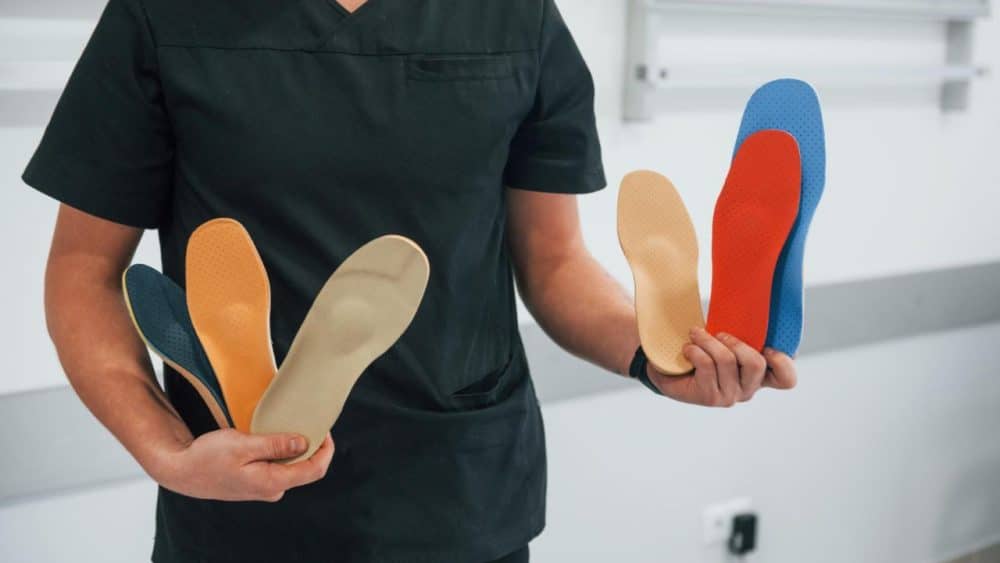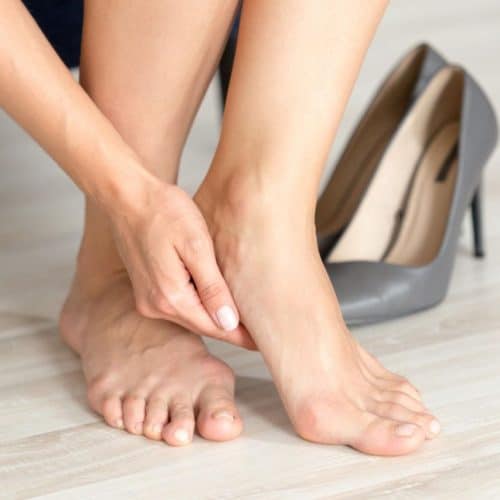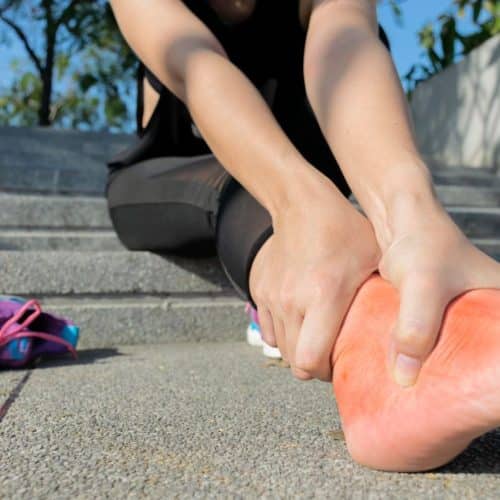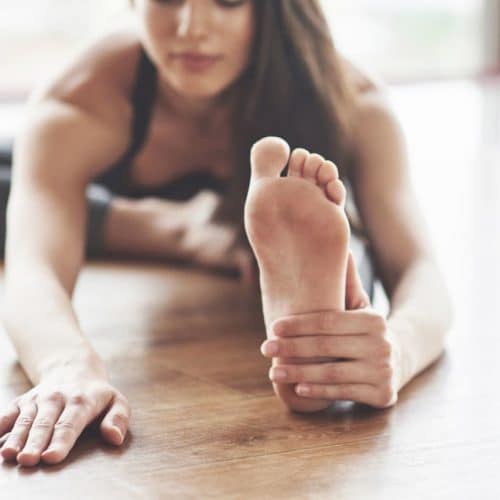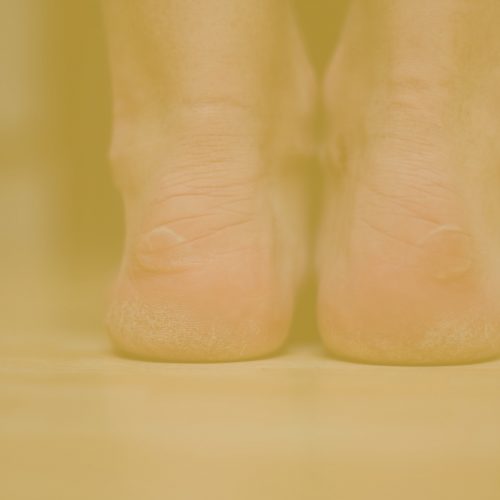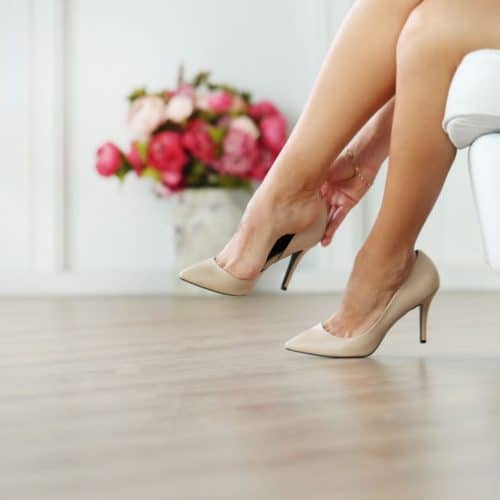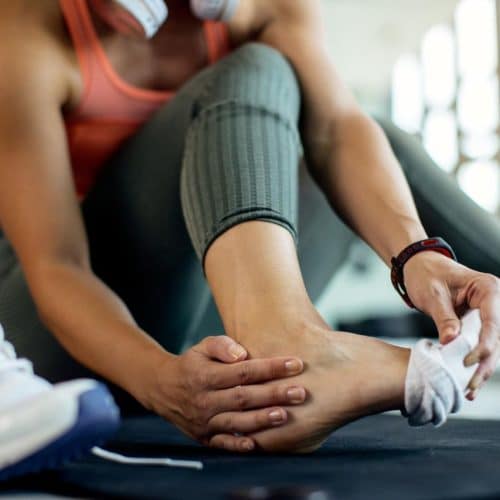Are you tired of dealing with persistent foot pain that hampers your daily activities? Have you ever wondered if there’s a solution beyond traditional remedies? Foot Orthotics is the answer you’re seeking. These seemingly unassuming devices have been making waves in Australia’s healthcare scene. But what exactly are foot orthotics, and how can they alleviate your foot discomfort?
In essence, foot orthotics are custom-designed shoe inserts crafted to provide support, correct imbalances, and enhance the overall biomechanics of your feet. These orthotics are individually tailored to address specific foot conditions, relieving individuals from plantar fasciitis to overpronation. By redistributing pressure and aligning your feet’s structure, orthotics can remarkably improve mobility and comfort.
By the end of this read, you’ll be equipped with the knowledge to embark on a journey towards happier and healthier feet. So, lace up your curiosity and step into the realm of foot orthotics—your feet will thank you!
Understanding Foot Orthotics
Proper support and alignment must be balanced regarding foot health and overall well-being. Foot orthotics, often referred to as shoe inserts or insoles, are specialised devices designed to provide comprehensive support to the feet, ankles, and lower limbs. These devices are not only about comfort; they are crucial in addressing various foot-related issues and improving overall mobility.
1. The Foundation of Foot Health
Imagine your feet as the foundation of a building. Just as a strong foundation is essential for the stability of a structure, healthy feet are vital for your body’s stability and balance. However, many factors can impact the health and structure of our feet. From genetics to lifestyle choices, daily activities, and even the types of shoes we wear, many elements can contribute to foot discomfort, pain, and irregular biomechanics.
2. The Role of Orthotics
Foot orthotics are meticulously crafted devices that aim to correct and support the natural alignment of the feet and lower limbs. Orthotics can alleviate discomfort and address various foot conditions by providing additional cushioning, arch support, and redistributing pressure. These conditions range from common issues like plantar fasciitis and flat feet to more complex biomechanical irregularities impacting walking patterns and overall posture.
3. Personalised Solutions for Foot Health
One of the remarkable aspects of foot orthotics is their versatility and adaptability. These devices can be tailored to meet the unique needs of individuals. No two pairs of feet are identical; this individuality is considered when designing and crafting orthotics. By analysing factors such as foot structure, gait analysis, and specific concerns, podiatrists can create orthotics that offer personalised solutions for each individual.
4. Enhancing Comfort and Quality of Life
The benefits of foot orthotics extend beyond the feet themselves. By addressing discomfort and supporting proper alignment, these devices can alleviate pain in the feet, ankles, knees, and lower back. Imagine walking, standing, and engaging in daily activities without foot pain. Foot orthotics enable individuals to enjoy a better quality of life by enhancing mobility, reducing fatigue, and allowing them to participate in activities they love.
5. Empowering Individuals Through Knowledge
Understanding foot orthotics empowers individuals to take proactive steps towards their foot health. Individuals can seek timely guidance from podiatrists and healthcare practitioners by recognising the signs of discomfort, irregular walking patterns, or conditions like overpronation and supination. Early intervention with orthotics can prevent issues from worsening and promote long-term foot health.
Benefits of Foot Orthotics
Foot orthotics offer many benefits, making them a valuable solution for individuals seeking to improve their foot health and overall well-being. These specialised devices, designed to provide support and alignment, have the potential to transform the way you experience daily life. Here are some key advantages of using foot orthotics:
- Pain Reduction: Foot orthotics can effectively alleviate pain and discomfort associated with various foot conditions. By providing additional support to specific feet areas, orthotics help distribute pressure more evenly, reducing strain and easing pain.
- Improved Biomechanics: Irregular walking patterns and improper foot alignment can lead to biomechanical issues that impact your posture and overall body mechanics. Foot orthotics address these issues by promoting proper foot alignment, which can have a positive ripple effect on the rest of the body.
- Enhanced Comfort: The cushioning and support offered by foot orthotics enhance comfort while walking, standing, and engaging in physical activities. They provide an extra layer of cushioning that can be particularly beneficial for those spending extended periods on their feet.
- Reduced Fatigue: Discomfort and foot pain can lead to fatigue, making everyday tasks more challenging. Foot orthotics help alleviate this fatigue by providing the necessary support and cushioning, allowing you to stay on your feet for longer periods without feeling as tired.
- Injury Prevention: Proper foot alignment and support are essential for preventing injuries. Foot orthotics can help mitigate the risk of injuries by providing stability, especially during physical activities and sports where foot mechanics play a crucial role.
- Enhanced Mobility: Foot pain or discomfort can hinder your ability to move freely. Foot orthotics can significantly improve your mobility by addressing the underlying causes of pain and discomfort, enabling you to move more comfortably and confidently.
- Postural Improvement: The alignment of your feet directly impacts your overall posture. By promoting proper foot alignment, orthotics contribute to better posture, reducing strain on other body parts, such as the lower back.
- Versatility: Foot orthotics can be customised to address various foot conditions and concerns. Whether you have flat feet, high arches, or specific biomechanical irregularities, orthotics can be designed to suit your individual needs.
- Long-Term Benefits: Investing in foot orthotics is an investment in your long-term foot health. By addressing issues early on and preventing further complications, orthotics can improve quality of life.
- Functional Improvement: For individuals with conditions that impact their ability to walk or engage in physical activities, foot orthotics can provide functional improvement. They enable individuals to perform daily tasks with greater ease and confidence.
Foot orthotics offer a comprehensive approach to foot health and well-being. Whether you’re seeking relief from pain, improved mobility, or a proactive way to prevent future issues, foot orthotics can provide the support you need to lead a more comfortable and active life.
Common Foot Conditions Addressed by Orthotics
Foot orthotics are versatile solutions that effectively address many common foot conditions, providing relief and improving overall comfort. Whether you’re dealing with discomfort from daily activities or more specific issues, foot orthotics can play a vital role in managing and alleviating these conditions. Here are some of the most prevalent foot conditions that can be addressed through orthotic use:
- Plantar Fasciitis: Characterised by pain and inflammation in the heel, plantar fasciitis is a common condition caused by the strain on the plantar fascia, a band of tissue that connects the heel bone to the toes. Orthotics can provide support and cushioning to alleviate the pain associated with this condition.
- Flat Feet (Pes Planus): Flat feet occur when the arches of the feet are either very low or absent, leading to overpronation. This can result in discomfort and fatigue. Orthotics designed to provide arch support can help stabilise the feet and alleviate these symptoms.
- Bunions and Blisters: Bunions are bony protrusions that form at the base of the big toe, causing pain and discomfort. Blisters are friction-induced fluid-filled sacs that can develop on the feet. Orthotics can offer cushioning and reduce pressure on these sensitive areas.
- Pronation and Supination Issues: Overpronation (inward rolling of the feet) and supination (outward rolling) can lead to various foot and lower limb issues. Orthotics can help correct these irregular mechanics by providing the necessary support and alignment.
- Metatarsalgia: This condition involves pain and inflammation in the ball of the foot, often caused by excessive pressure on the metatarsal bones. Orthotics can redistribute pressure and alleviate discomfort in this area.
- Achilles Tendonitis: Achilles tendonitis is characterised by pain and inflammation in the Achilles tendon, which connects the calf muscles to the heel bone. Orthotics can provide cushioning and support to alleviate strain on the Achilles tendon.
- Shin Splints: Shin splints refer to pain along the shin bone (tibia) caused by overuse or stress on the lower leg muscles. Orthotics can help absorb shock and reduce strain on the muscles, providing relief from shin splints.
- Morton’s Neuroma: This condition involves thickening tissue around the nerves between the toes, leading to pain and discomfort. Orthotics with metatarsal pads can help alleviate pressure on the affected area.
- Hammer Toes: Hammer toes occur when the middle joint of a toe becomes abnormally bent, causing pain and difficulty wearing shoes. Orthotics can provide cushioning and support to alleviate pressure on the toes.
- High Arches (Pes Cavus): High arches can lead to instability and strain on the feet. Orthotics designed to provide arch support can help distribute pressure more evenly and reduce discomfort.
By addressing these common foot conditions, orthotics offer a comprehensive approach to foot health. Whether you’re seeking relief from pain, enhanced mobility, or preventive measures, orthotics can be tailored to your unique needs, allowing you to lead a more comfortable and active life.
The Process of Getting Foot Orthotics
Obtaining foot orthotics involves a step-by-step process that begins with a thorough assessment and ends with the creation of customised devices designed to address your specific foot concerns. This process ensures that the orthotics you receive are tailored to your needs, promoting maximum comfort and effectiveness.
1. Initial Consultation
The journey to obtaining foot orthotics starts with an initial consultation with a podiatrist. During this consultation, you can discuss any foot discomfort, pain, or concerns you’re experiencing. The podiatrist will also examine your foot structure, alignment, and gait to identify potential issues that could benefit from orthotic intervention.
2. Comprehensive Assessment
Following the initial consultation, a comprehensive assessment will be conducted. This may involve gait analysis, where your walking and running patterns are observed, and examining your feet in both weight-bearing and non-weight-bearing positions. This thorough evaluation helps the podiatrist understand your foot mechanics and any potential irregularities.
3. Digital Imaging or Casting
Sometimes, the healthcare practitioner may use digital imaging or casting to create a precise model of your feet. Digital imaging uses specialised equipment to capture accurate measurements, while casting involves creating a mould of your feet using materials that harden to form a replica. These methods ensure that the orthotics are tailored to the unique contours of your feet.
4. Design and Customisation
Based on the assessment and measurements, the podiatrist will design and customise the foot orthotics to address your needs. This includes determining the support, cushioning, and alignment correction required for optimal results. Customisation is critical, ensuring the orthotics align with your foot structure and concerns.
5. Fabrication and Production
Once the design is finalised, the orthotics are fabricated and produced using specialised materials. These materials are chosen for their durability, cushioning properties, and ability to provide the desired support. The fabrication process may involve cutting, shaping, and assembling various components to create the final orthotic device.
6. Fitting and Adjustment
Once the orthotics are ready, you will return to the podiatrist for a fitting session. During this session, you’ll try on the orthotics and provide feedback on their fit and comfort. The podiatrist may make minor adjustments to ensure the orthotics fit snugly and comfortably within your shoes.
7. Follow-Up and Monitoring
After receiving your foot orthotics, the podiatrist will recommend a follow-up appointment to monitor your progress. This follow-up allows them to assess how well the orthotics address your concerns and whether further adjustments are needed. They can also guide the wearing and caring for the orthotics.
8. Enjoying the Benefits
You can enjoy improved foot support and alignment with your newly customised foot orthotics. Whether you’re seeking relief from pain, addressing specific foot conditions, or enhancing your overall mobility, the orthotics are designed to help you move comfortably and confidently.
The Role of Podiatrists in Orthotic Treatment
Podiatrists play a pivotal role in orthotic treatment, ensuring individuals receive personalised and effective solutions for their foot concerns. These specialised healthcare practitioners possess the knowledge, expertise, and experience to assess, diagnose, and recommend appropriate orthotic interventions. Here are some key aspects of the podiatrist’s role in orthotic treatment:
- Expert Assessment: Podiatrists are trained to conduct thorough foot structure, gait, and biomechanics assessments. They can carefully examine potential issues and irregularities that may require orthotic intervention.
- Diagnosis and Condition Identification: If you’re experiencing foot pain or discomfort, a podiatrist can accurately diagnose the underlying condition causing the problem. This diagnosis forms the basis for developing an effective orthotic treatment plan.
- Customisation: Podiatrists are skilled in designing and customising orthotics to meet your needs. They consider factors such as foot shape, arch height, gait patterns, and specific concerns to create orthotics that provide optimal support and alignment.
- Recommendation of Orthotic Type: A podiatrist can recommend the most appropriate orthotics for your situation based on the assessment and diagnosis. Whether you need off-the-shelf options or customised devices, they can guide you in making the right choice.
- Proper Fitting: Ensuring that orthotics fit comfortably within your footwear is crucial for effectiveness. Podiatrists have the expertise to fit orthotics to your shoes properly, making adjustments as needed to maximise comfort and functionality.
- Education and Guidance: As part of orthotic treatment, podiatrists provide education about proper usage, care, and maintenance of the orthotics. They offer guidance on gradually integrating orthotics into your daily activities for optimal results.
- Monitoring and Adjustments: During the treatment process, podiatrists monitor your progress and address any concerns. They can make necessary adjustments to the orthotics if you experience discomfort or changes in your foot health.
- Collaboration with Other Professionals: In cases where orthotic treatment is part of a larger healthcare plan, podiatrists collaborate with other healthcare practitioners, such as physical therapists and orthopedic surgeons, to ensure comprehensive and coordinated care.
- Preventive Measures: Podiatrists address current foot issues and offer preventive measures to avoid future problems. They guide footwear choices, proper foot care, and exercises to support overall foot health.
- Evidence-Based Approach: Podiatrists base their recommendations on evidence-based practices, ensuring that the orthotic treatment plan is grounded in scientific research and clinical expertise.
- Long-Term Foot Health: The ultimate goal of podiatrists is to improve your long-term foot health and overall well-being. Addressing foot concerns through orthotics helps you maintain comfort, mobility, and an active lifestyle.
By working closely with podiatrists, individuals can access the expertise needed to identify, manage, and alleviate various foot conditions through orthotic treatment. Whether you’re seeking pain relief, improved mobility, or preventive measures, podiatrists provide the guidance and support necessary to enhance your foot health.
Myth Debunking: Separating Facts from Fiction
Various myths and misconceptions about foot orthotics can cloud our understanding of their benefits and limitations. It’s essential to dispel these myths and rely on evidence-based information to make informed decisions about orthotic treatment. Let’s take a closer look at some common myths and the facts that debunk them:
Myth: Orthotics Are Only for People with Foot Pain
Fact: While orthotics are valuable for individuals seeking relief from foot pain, they offer benefits beyond pain management. Orthotics provide support, alignment correction, and enhanced comfort for those with various foot concerns, even if pain isn’t a primary issue.
Myth: Orthotics Are Uncomfortable to Wear
Fact: Modern orthotics are designed with comfort in mind. While there might be an adjustment period as your feet get used to the new support, orthotics are crafted to provide cushioning and support that improve overall comfort during daily activities.
Myth: Over-the-Counter Orthotics Are as Effective as Custom Orthotics
Fact: Over-the-counter orthotics can offer temporary relief, but they lack the customisation that comes with professionally designed custom orthotics. Custom orthotics are tailored to your specific foot structure and needs, ensuring a more precise and effective solution.
Myth: Orthotics Weaken Foot Muscles
Fact: Orthotics are designed to provide support, not replace the function of foot muscles. They help distribute pressure and correct alignment, alleviating strain on muscles. Properly prescribed orthotics can work in harmony with foot muscles.
Myth: Orthotics Are Only for Older Adults
Fact: Orthotics are suitable for individuals of all ages. Whether you’re an athlete with flat feet or experiencing discomfort, orthotics can provide valuable support and preventive measures at any life stage.
Myth: Once You Start Wearing Orthotics, You Can Never Stop
Fact: Orthotics are often recommended for specific periods, especially during pain or rehabilitation. Depending on your condition, podiatrists suggest gradually reducing usage once improvements are observed. This approach promotes long-term foot health.
Myth: Orthotics Can Completely “Cure” Foot Problems
Fact: While orthotics can greatly alleviate discomfort and improve alignment, they may not completely “cure” all foot issues. They work with other treatments and preventive measures to manage conditions effectively.
Myth: Orthotics Are Only for People with Severe Foot Conditions
Fact: Orthotics cater to many foot concerns, from minor discomfort to more severe conditions. They can provide preventive support and enhance comfort for anyone seeking to improve their foot health.
Conclusion
In conclusion, foot orthotics have emerged as a groundbreaking solution for individuals seeking comfort, support, and relief from various foot-related issues. Australia has embraced this revolutionary approach to foot care, offering a diverse range of orthotic solutions that cater to different needs and preferences. Whether you’re an athlete striving for peak performance, an individual dealing with chronic foot pain, or someone looking to enhance overall foot health, foot orthotics have proven their efficacy repeatedly.
By realigning the foot’s structure, absorbing shock, and providing cushioning, orthotics play a pivotal role in alleviating pain and promoting proper foot function. They have become a staple in the lives of many Australians, helping them regain mobility, enhance their quality of life, and prevent future foot complications.
Now that you’re armed with insights into the world of foot orthotics and their remarkable benefits, it’s time to consider your personal foot health goals. Are you aiming to enhance your sports performance, bid farewell to persistent foot pain, or simply ensure your feet’s long-term well-being? Share your aspirations with us and explore how the power of foot orthotics can guide you towards a future of comfort, mobility, and confidence.
Explore our comprehensive range of foot orthotics tailored to your unique needs, and take the first step towards walking a pain-free path. Remember, each foot has a unique story—let foot orthotics support your story into one of comfort and vitality.
Content Summary
- In essence, foot orthotics are custom-designed shoe inserts crafted to provide support, correct imbalances, and enhance the overall biomechanics of your feet.
- These orthotics are individually tailored to address specific foot conditions, relieving individuals from plantar fasciitis to overpronation.
- By redistributing pressure and aligning your feet’s structure, orthotics can remarkably improve mobility and comfort.
- Proper support and alignment must be balanced regarding foot health and overall well-being.
- Foot orthotics, often referred to as shoe inserts or insoles, are specialised devices designed with the purpose of providing comprehensive support to the feet, ankles, and lower limbs.
- These devices are not only about comfort; they are crucial in addressing various foot-related issues and improving overall mobility.
- From genetics to lifestyle choices, daily activities, and even the types of shoes we wear, many elements can contribute to foot discomfort, pain, and irregular biomechanics.
- Foot orthotics are meticulously crafted devices that aim to correct and support the natural alignment of the feet and lower limbs.
- One of the remarkable aspects of foot orthotics is their versatility and adaptability.
- These devices can be tailored to meet the unique needs of individuals.
- Foot orthotics offer many benefits, making them a valuable solution for individuals seeking to improve their foot health and overall well-being.
- Foot orthotics can effectively alleviate pain and discomfort associated with various foot conditions.
- Proper foot alignment and support are essential for preventing injuries.
- Investing in foot orthotics is an investment in your long-term foot health.
- Foot orthotics offer a comprehensive approach to foot health and well-being.
- Whether you’re seeking relief from pain, improved mobility, or a proactive way to prevent future issues, foot orthotics can provide the support you need to lead a more comfortable and active life.
- Foot orthotics are versatile solutions that effectively address many common foot conditions, providing relief and improving overall comfort.
- Whether you’re dealing with discomfort from daily activities or more specific issues, foot orthotics can play a vital role in managing and alleviating these conditions.
- Orthotics designed to provide arch support can help stabilise the feet and alleviate these symptoms.
- Orthotics can provide cushioning and support to alleviate strain on the Achilles tendon.
- Orthotics can help absorb shock and reduce strain on the muscles, providing relief from shin splints.
- Orthotics can provide cushioning and support to alleviate pressure on the toes.
- Obtaining foot orthotics involves a step-by-step process that begins with a thorough assessment and ends with the creation of customised devices designed to address your specific foot concerns.
- The journey to obtaining foot orthotics starts with an initial consultation with a qualified healthcare practitioner, typically a podiatrist.
- Following the initial consultation, a comprehensive assessment will be conducted.
- Based on the assessment and measurements, the podiatrist will design and customise the foot orthotics to address your needs.
- Customisation is critical, ensuring that the orthotics align with your foot structure and concerns.
- After receiving your foot orthotics, the podiatrist will recommend a follow-up appointment to monitor your progress.
- Podiatrists are trained to conduct thorough foot structure, gait, and biomechanics assessments.
- A podiatrist can recommend the most appropriate orthotics for your situation based on the assessment and diagnosis.
- In cases where orthotic treatment is part of a larger healthcare plan, podiatrists collaborate with other healthcare practitioners, such as physical therapists and orthopedic surgeons, to ensure comprehensive and coordinated care.
- Podiatrists base their recommendations on evidence-based practices, ensuring that the orthotic treatment plan is grounded in scientific research and clinical expertise.
- The ultimate goal of podiatrists is to improve your long-term foot health and overall well-being.
- By working closely with podiatrists, individuals can access the expertise needed to identify, manage, and alleviate various foot conditions through orthotic treatment.
- Whether you’re seeking pain relief, improved mobility, or preventive measures, podiatrists provide the guidance and support necessary to enhance your foot health.
- Various myths and misconceptions about foot orthotics can cloud our understanding of their benefits and limitations.
- It’s essential to dispel these myths and rely on evidence-based information to make informed decisions about orthotic treatment.
- Whether you’re an athlete with flat feet or experiencing discomfort, orthotics can provide valuable support and preventive measures at any life stage.
- They can provide preventive support and enhance comfort for anyone seeking to improve their foot health.
- In conclusion, foot orthotics have emerged as a groundbreaking solution for individuals seeking comfort, support, and relief from various foot-related issues.
- Australia has embraced this revolutionary approach to foot care, offering a diverse range of orthotic solutions that cater to different needs and preferences.
- By realigning the foot’s structure, absorbing shock, and providing cushioning, orthotics play a pivotal role in alleviating pain and promoting proper foot function.
- They have become a staple in the lives of many Australians, helping them regain mobility, enhance their quality of life, and prevent future foot complications.
- Now that you’re armed with insights into the world of foot orthotics and their remarkable benefits, it’s time to consider your personal foot health goals.
- Share your aspirations with us and explore how the power of foot orthotics can guide you towards a future of comfort, mobility, and confidence.
FAQs
1. Are orthotics only for people with foot pain?
Orthotics can benefit individuals with various foot concerns, not just those experiencing pain. They provide support, alignment, and enhanced comfort.
2. Can I buy orthotics without consulting a professional?
While you can find over-the-counter options, consulting a podiatrist ensures a proper assessment and customised solution.
3. Do orthotics work for sports activities?
Sports-specific orthotics can be designed to accommodate the demands of various physical activities and enhance performance.
4. How often should I replace my orthotics?
The lifespan varies, but replacing orthotics every 1-5 years is recommended, depending on wear and tear.
5. Does insurance cover orthotics in Australia?
Some private health insurance plans may cover orthotic expenses. It’s best to check with your insurance provider for details.


